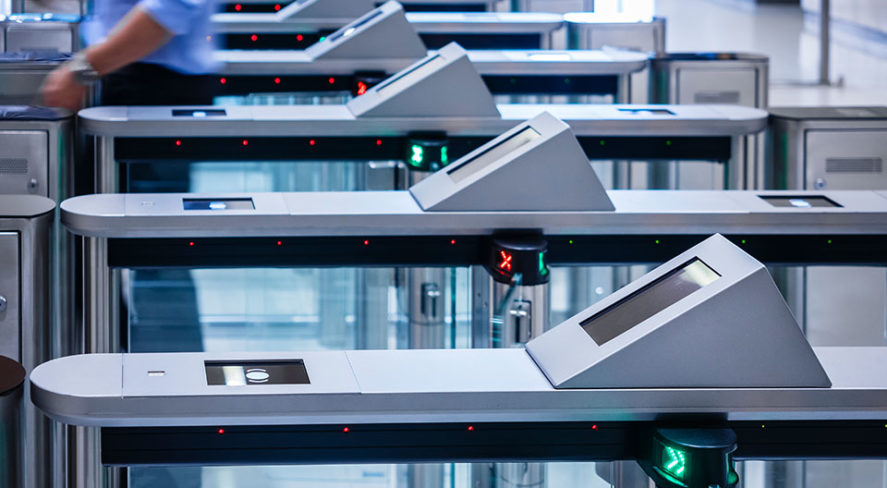Five Reasons to Consider Upgrading to a Modern, Open-Architecture Access Control System


Legacy access control systems are often costly to maintain, less secure than newer systems and potentially not able to meet the standards required for modern regulatory compliance, yet many organizations continue to use aging access control systems so long as badging in and out works – or until security breaches reveal important vulnerabilities in their systems.
The cost and complexity of switching access control systems often hold many companies back from making a change from their legacy system; however, a modern, unified IP-based system can offer many cost savings – and switching is not as daunting as many organizations might think. The best way to minimize costs and streamline the transition is to select an open-architecture solution for access control.
Here are five reasons to consider upgrading your access control system to a modern, open-architecture solution.
1. Open-architecture solutions allow for scalability
Legacy systems often lock customers into using a limited selection of hardware from just one vendor. As their needs evolve and the organization grows, it may be challenging and costly to source compatible hardware. Conversely, an open-architecture solution is compatible with many different products and solutions. With more options to choose from, companies can pick the hardware that fits best their goals.
Likewise, some of an organization’s existing hardware may be compatible with their new software, so there may not be a need to replace everything when installing their new system. With an open-architecture system, companies have more options to add, change or upgrade hardware as they scale their systems.
2. Modern systems can enhance your physical and cyber security
In addition to enhanced scalability features, modern access control systems offer enhanced security features. Access control systems are targeted to both physical threats to gain access to a site as well as cybersecurity threats to gain access to an organization’s computer network. Newer systems offer advanced protection on both counts.
Modern IP systems can take advantage of cutting-edge technologies such as wireless locks, smartphone credentials, biometrics, new software features, cloud technologies and other tools that are often not easily implemented in legacy systems. These newer technologies are more resistant to cyberattacks and credential duplication that can lead to unauthorized access. Modern systems also have enhanced data encryption methods, advanced authentication and other features to defend against cyberattacks and malware.
3. Discover ROI opportunities through your access control system
Modern, IP-based access control solutions are not only more secure and effective but may also be more cost-effective in the long run. Ask your technology provider for help calculating the true costs and benefits of both systems to identify what level of investment is feasible. For example, some companies that have switched to a unified access control system have connected it to lighting and HVAC systems so that they’re able to identify when spaces aren’t occupied and reduce utility usage. In a larger campus, the energy savings from this can be significant.
Modern access control systems can also improve operations. For example, systems can be connected to elevators and used to allow or disallow access for certain people to certain floors. A modern system can also keep track of data on how many people use the elevator and at what times. That information can be used to optimize elevator dispatch patterns based on the time of day to improve the flow of people through the building.
4. Ease the pain of change by implementing a modern, open-architecture solution
While organizations may recognize the benefits of upgrading their system, the thought of undertaking the process may seem overwhelming; however, because modern IP-based systems are flexible and scalable, organizations can choose to undertake a gradual transition in phases or even run both systems in parallel for a short time. This will minimize downtime and allows teams to fully test and learn the new system as it is installed.
An open-architecture system also provides more flexibility to design a budget-friendly transition. Teams don’t have to make a big investment in software and equipment to switch everything at once. A subscription-based system lowers the upfront cost and allows a transition at a lower price point. Organizations can then add more capacity or extra features as needed.
Choosing a unified system has another benefit to aid the transition as well – because all systems are managed through the same software, it’s a lot quicker for teams to learn the new user interface. Onboarding time for new staff is also shorter because they only have one piece of security software to learn.
5. Unlock more value by upgrading your system
Many people underestimate the value a modern access control system can bring. With the technology advancing at such a rapid pace, the one question to ask your system integrator or vendor is, “What else can this do for me?”
Modern access control systems are much more than just tools to lock and unlock doors. Those that run on unified software gather and analyze data from many different sensors and devices. This information can be used not only to improve security, but also to gain important business insights on how spaces are being used and may suggest powerful new ways to optimize operations.
Tips to Ensure a Successful Migration
Every access control system is different because everyone has different needs. The best thing you can do is to discuss your needs and use case with your system integrator or vendor. They can help you design a system and coach you to use it to its full potential.
- Have clear objectives in mind (i.e., not just “replace my old system”). Remember: modern systems can do so much more than lock and unlock doors. What else do you want your new system to do for you? What criteria does your new system need to meet?
- Take stock of the components you have now: hardware, software, wiring, servers, etc. Consider what you can keep using. In an open-architecture system, you don’t always need to rip and replace everything. If the old hardware is compatible and meets the needs and objectives you have identified, why not keep using it?
- Ask your system integrator or vendor to help you understand how modern access control systems can be synchronized to existing cardholder and credential databases, such as HR directories.
- Create a migration plan that specifies a reasonable timeline and identifies the resources required to ensure a smooth transition. If you have limited internal resources or capacity, working with a migration specialist can be efficient and effective. A phased approach is often best to prevent downtime and ensure enough time for thorough testing.
- Keep learning! Once your system is installed, keep looking for new technologies and features that can enhance your system.
